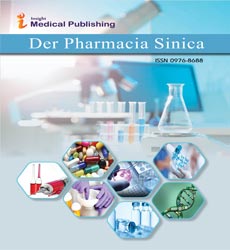ISSN : 0976 - 8688
Der Pharmacia Sinica
A pharmacoepidemiological approach to evaluate drug-drug interactions in a specialized stroke unit in Pakistan
Abstract
Stroke is one of the common diseases responsible for morbidity and mortality worldwide. (Mukherjee and Patil) It is a problem in both developed and developing countries despite advancements in its treatment and management through drug therapy or surgical intervention. (Murray and Lopez) Drug interactions in stroke patients present a unique challenge as the patient’s already critical condition makes concomitant drug administration risky. The main aim was to determine the prevalence of potential drug-drug interactions in stroke unit, and to identify clinically significant drug-drug interactions which have the potential to produce adverse drug events. One year cross-sectional study was carried out in a stroke unit of a tertiary care hospital. Patient medication charts were evaluated for potential drug-drug interactions and clinically significant potential drug-drug interactions using Micromedex DrugReax. Statistical analysis of the data was carried out using IBM SPSS Statistics for Windows, Version 20. A 70.8% prevalence of potential drug-drug interactions was observed in the patients of stroke unit. Furthermore, patients with cerebrovascular accident presented with a high risk of potential drug-drug interactions. Clinically significant interactions were present in 58.2% patients which was attributed to 58 drug pairs. Logistic regression analysis revealed that patients prescribed 6 or more drugs or of age 40 years or more were 6 and 4 times significantly more likely to have a drug-drug interaction respectively. A high prevalence of potential drug-drug interactions especially clinically significant interactions was present in stroke unit and could be avoided by management of a limited number of drug pairs.
Open Access Journals
- Aquaculture & Veterinary Science
- Chemistry & Chemical Sciences
- Clinical Sciences
- Engineering
- General Science
- Genetics & Molecular Biology
- Health Care & Nursing
- Immunology & Microbiology
- Materials Science
- Mathematics & Physics
- Medical Sciences
- Neurology & Psychiatry
- Oncology & Cancer Science
- Pharmaceutical Sciences
